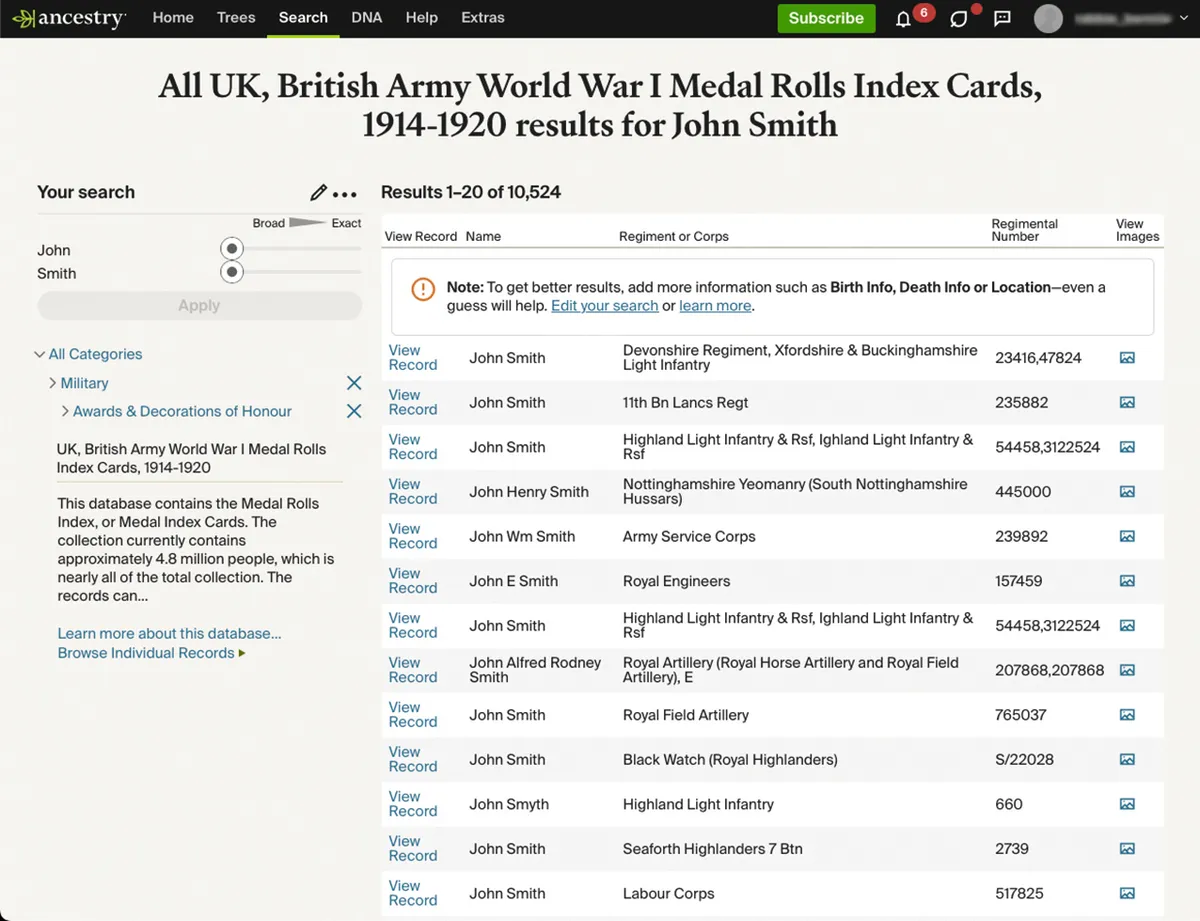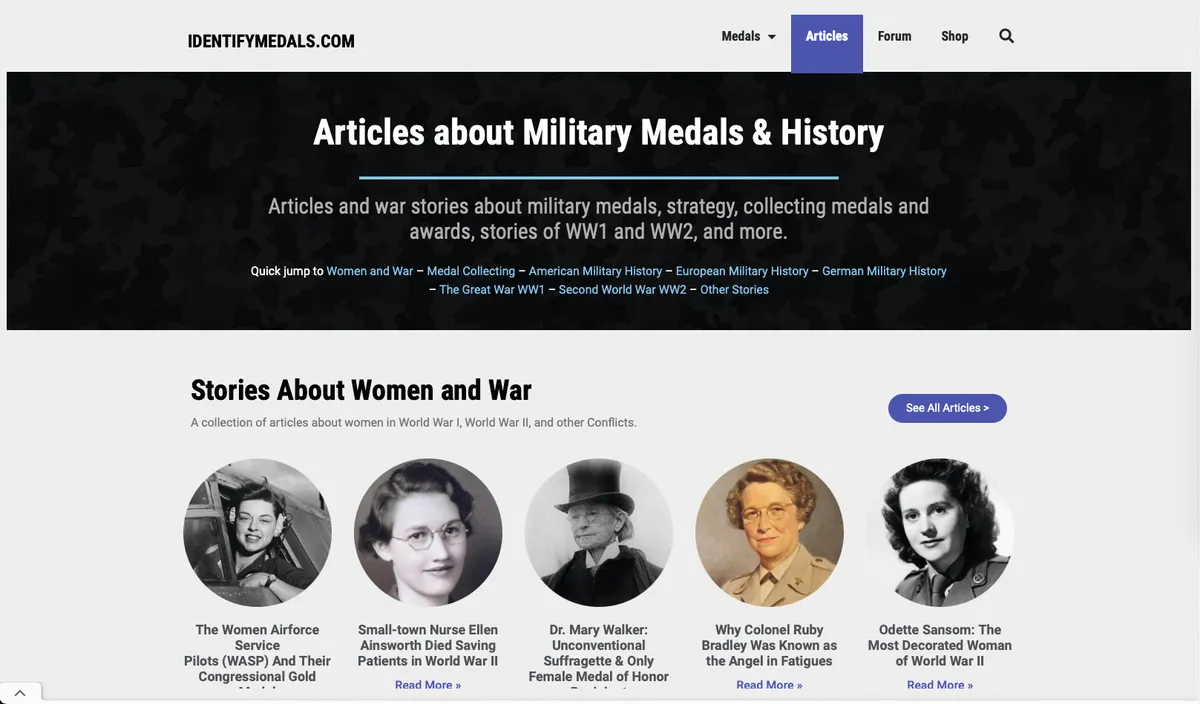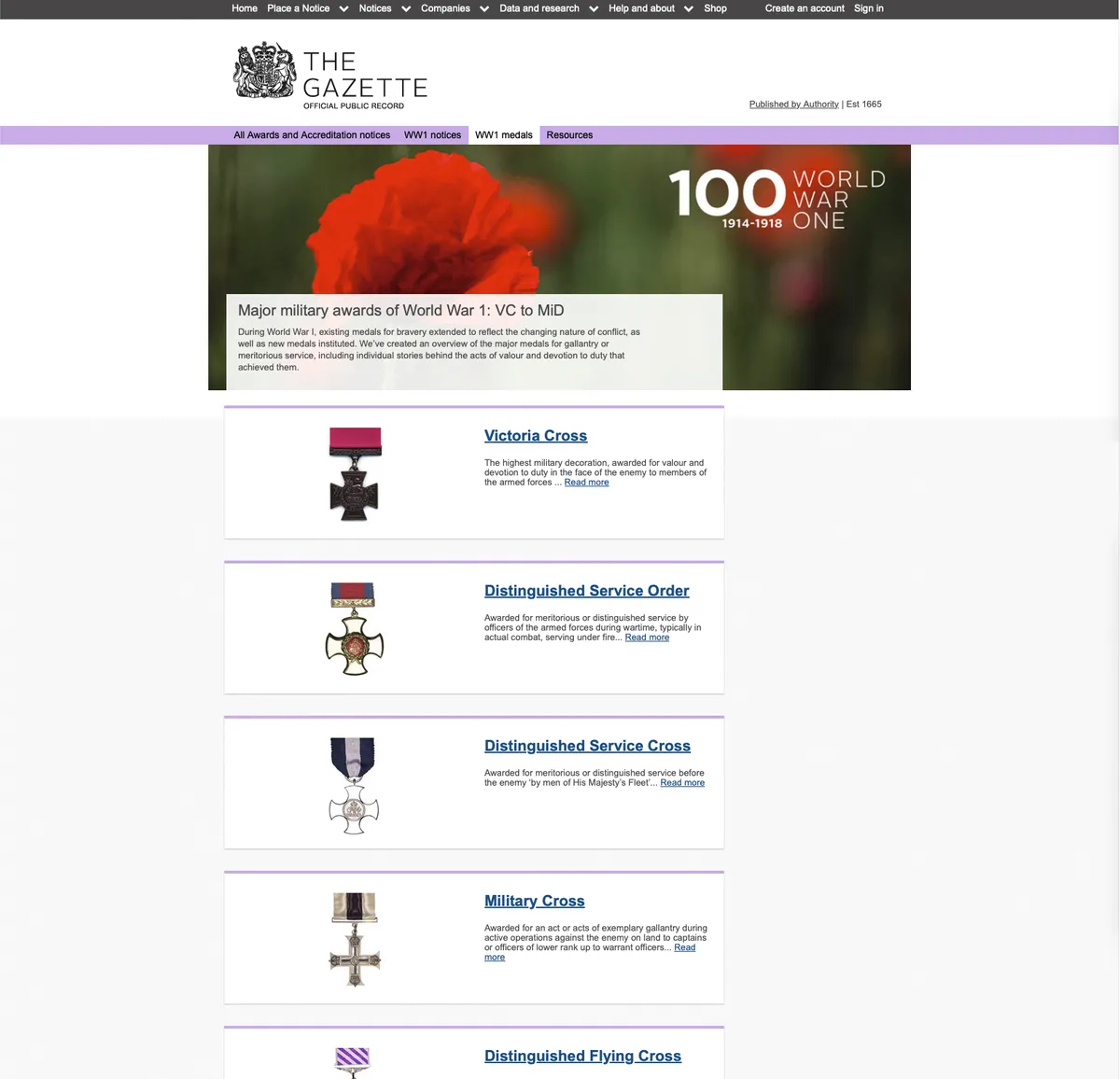Medals awarded to those who served can be one of the most valued possessions of a family historians and can provide exciting new avenues of research. Understanding what a medal ribbon or medal signifies can help you get a closer understanding of your military forebears.
The most common military medals you are likely to find in your family collection are either service or campaign medals. These were awarded to all those who met a certain criteria, such as service during a specified period in a specified area or for participating in a particular operation. Examples include those awarded during the First World War. The most common were the 1914-1915 Star, the British War Medal and the Allied Victory Medal. So many servicemen received these three medals that they were nicknamed 'Pip, Squeak and Wilfred' after three popular cartoon characters.
Campaign medals sometimes also came with clasps or bars relating to specific actions and occasionally for long service. An example would be a 'Battle of Britain' clasp on a 1939-45 Star.
Military decorations are medals awarded for military heroism or outstanding service. The most prestigious is the Victoria Cross, first awarded for valour during the Crimean War.
What are medal ribbons?
The ribbon that a medal hangs from is as distinctive as the medal itself. Usually striped, each medal ribbon is as unique as the medal it comes with. Because each ribbon design is specific to a particular medal, small strips of ribbon, known as medal ribbons or ribbon bars, can be used to represent a medal when it would not be practical to wear the medal itself.

Medals and medal ribbons must be worn in a specific order on the left-hand breast of a uniform. There is a useful article on Wikipedia that lists the order in which awards and medals for the British Armed Forces should be worn.
Below are some of the best websites for researching the story behind your British ancestors' medals.
Ancestry

Subscription website Ancestry is not the only commercial site with data for researching medals, but it does have vast collections and useful finding aids for researching both campaign/service medals and awards for gallantry.
The collection 'UK, British Army World War I Medal Rolls Index Cards, 1914–1920', for example, is described as “the most complete listing of individuals who fought in the British Army in WWI”, containing about 4.8 million people, or approximately 90 per cent of soldiers’ names. The cards were originally created in order to keep in one place details about a soldier’s medal entitlement, and can be searched by first and last name and corps, unit or regiment.
In addition, 'UK, Citations of the Distinguished Conduct Medal, 1914–1920' contains 25,000 citations for recipients of the Distinguished Conduct Medal, formerly Britain’s second-highest military honour for non-commissioned officers and enlisted personnel.
Another First World War collection is 'UK, Silver War Badge Records, 1914-1920'. This was introduced in September 1916 for those who were discharged from the ranks for illness or injury. On the back of each badge is a unique number – meaning each badge can be traced to an individual.
Almost 2.5 million entries can be searched in the collection 'UK, Military Campaign Medal and Award Rolls, 1793-1949' including Boer War and Second World War recipients.
The site also has a database of those who were eligible for the Waterloo medal in 1815.
Identify Medals

If you've come across a mysterious medal, or perhaps a scrap of ribbon, websites like this one can help. Identify Medals, run by Yisela Alvarez Trentini, has an international focus; a clean, simple design; lots of images; and a host of articles about collecting medals and military history. Most importantly, each medal comes with a detailed description of its characteristics, including the ribbon, and when it was awarded. The 1798 Davison’s Nile Medal, we learn, was awarded in gold to Nelson and his captains, in silver to lieutenants and warrant officers, in gilt metal to petty officers, and in copper to seamen and marines.
The Gazette

Gallantry medals, awarded for heroic deeds or actions, were officially announced in the journal of public record, the London, Belfast or Edinburgh Gazette. Some but not all will include a citation, describing the specific action – there are no citations for 'mentions in dispatches', for example. While this free website serves as an immensely valuable resource, using it requires patience. You can search by name, service number, publication date and type of award, but you will need to know roughly when the award was announced. There are indexes at The National Archives and on Ancestry that can help establish a date, as well as PDF index volumes.
The National Archives (TNA)

With so much medal-related material at TNA, you will need to refer to its various research guides to make sense of its holdings. This one is specific to campaign and service medals, but there is another focusing on awards for military gallantry. They link to digital resources, describe what isn't yet available online, and where there are likely to be gaps. It's worth investigating some of the free digitised microfilms too. The 'Recommendations for military honours and awards 1935–1990' from WO 373, for example, are arranged by theatre of war and date, and some are indexed by name in TNA’s catalogue Discovery. If you register on the site you can access images of WW1 medal cards for free, making this an excellent option for researchers who don't want to pay for a subscription to a genealogy website.
British Medal Forum
This long-standing and very busy forum boasts more than 1,130,000 posts, although you do need to register to use it.
Empire Medals
If you're lucky enough to own an ancestor's medal, this firm supplies ribbon for most military medals, awards and decorations, as well as for foreign awards and commemorative medals.
Findmypast
This popular subscription website has details of WW1 campaign medals as well as earlier campaign, gallantry and long service medals trawled from TNA's website. It also has a list of Silver War Badge recipients taken from the Naval and Military Archive database (see below), although to see the actual roll, you will have to visit Ancestry.
Imperial War Museum
This handy illustrated guide begins by spelling out the difference between service and campaign medals.
Long, Long Trail
This comprehensive First World War specialist website has plenty of advice on WW1 medals and how to research their recipients. For example, its page on campaign medals explains how the rolls can shed crucial light on a man's service.
Medals of the World
Most of the military medals included here have photographs of the obverse and reverse of the award, plus a graphic showing the official ribbon.
Naval & Military Archive
Another potential source for First World War medals is this subscription website from the Naval & Military Press. Here you can find material transcribed from the 2,972 thick volumes of campaign medal rolls stored at The National Archives (TNA) in Kew (WO 329). These contain more detail than the précis information found in the Medal Index Cards on Ancestry. The site also has a database of recipients of the Silver War Badge.
Orders and Medals Research Society
Here you can find out about the society’s long-running journal, which has been published since 1947. There's also the Orders and Medals Society of America.
Royal Mint Museum
Here you can search the museum's copy of the Waterloo Medal Roll free of charge.
TheGenealogist
The Military Medal (MM) recognised “acts of gallantry and devotion to duty under fire”, and Subscription website TheGenealogist has records of more than 117,000 MMs awarded during the First World War.

